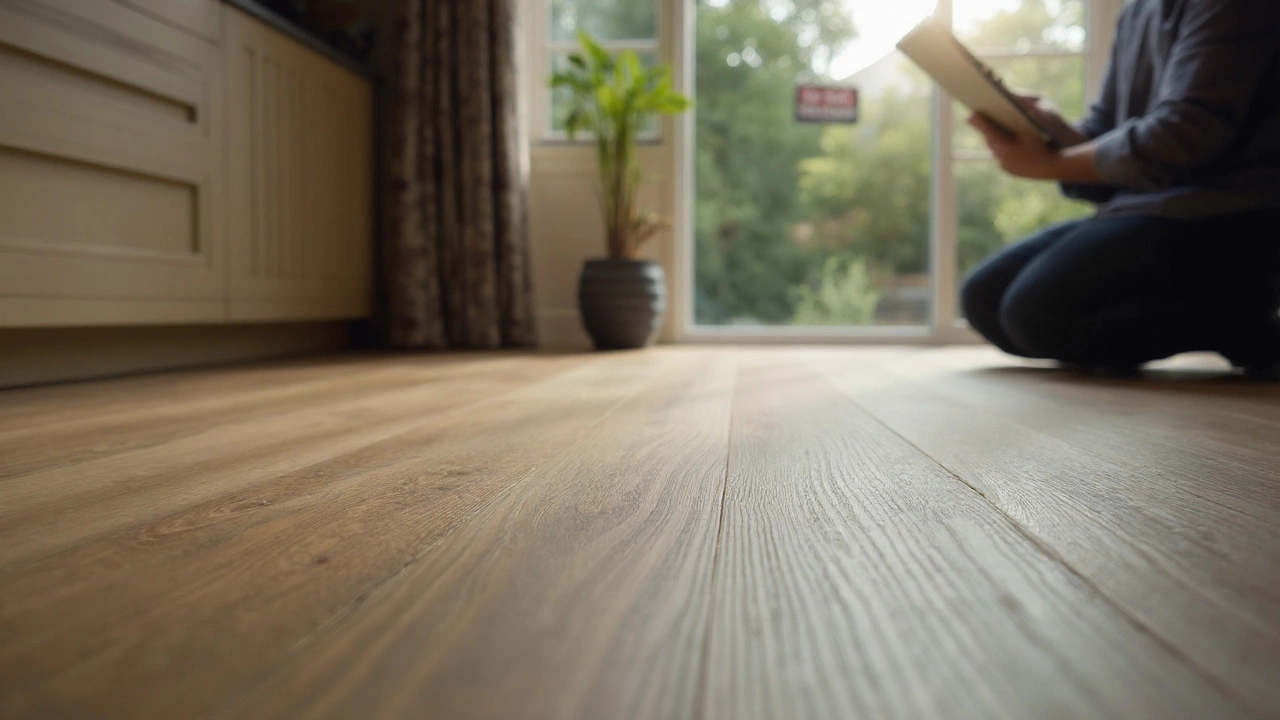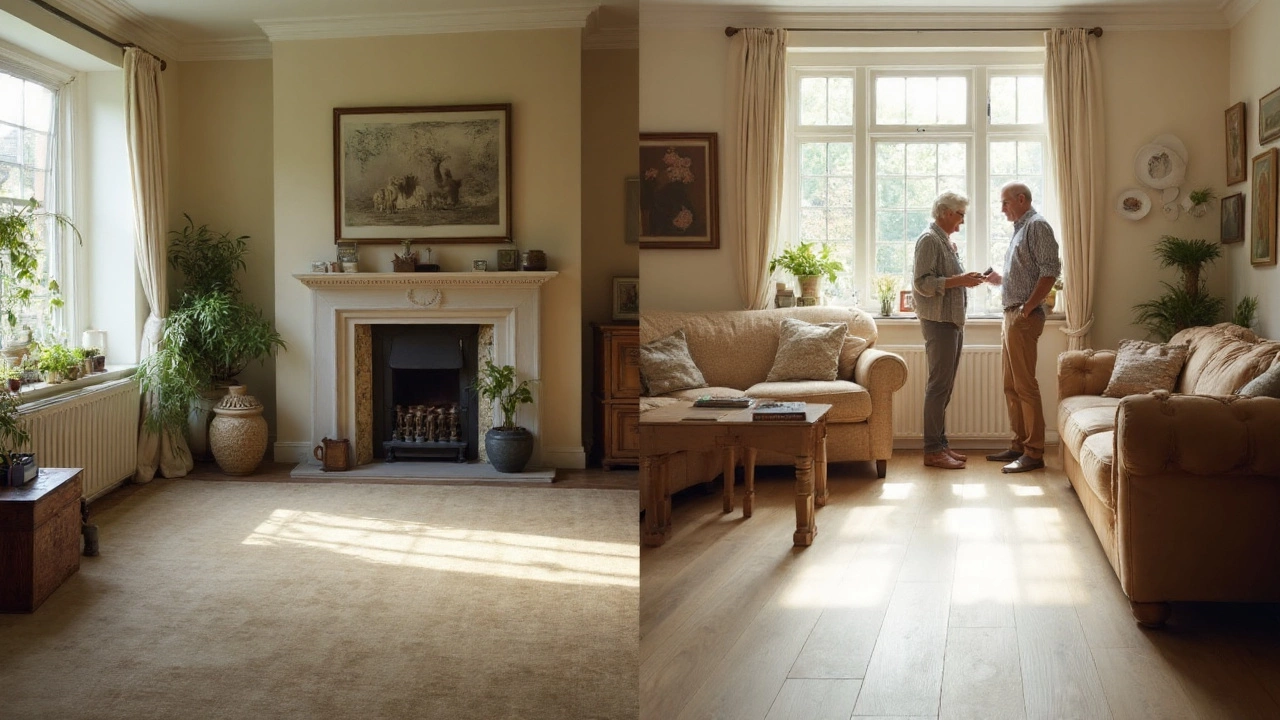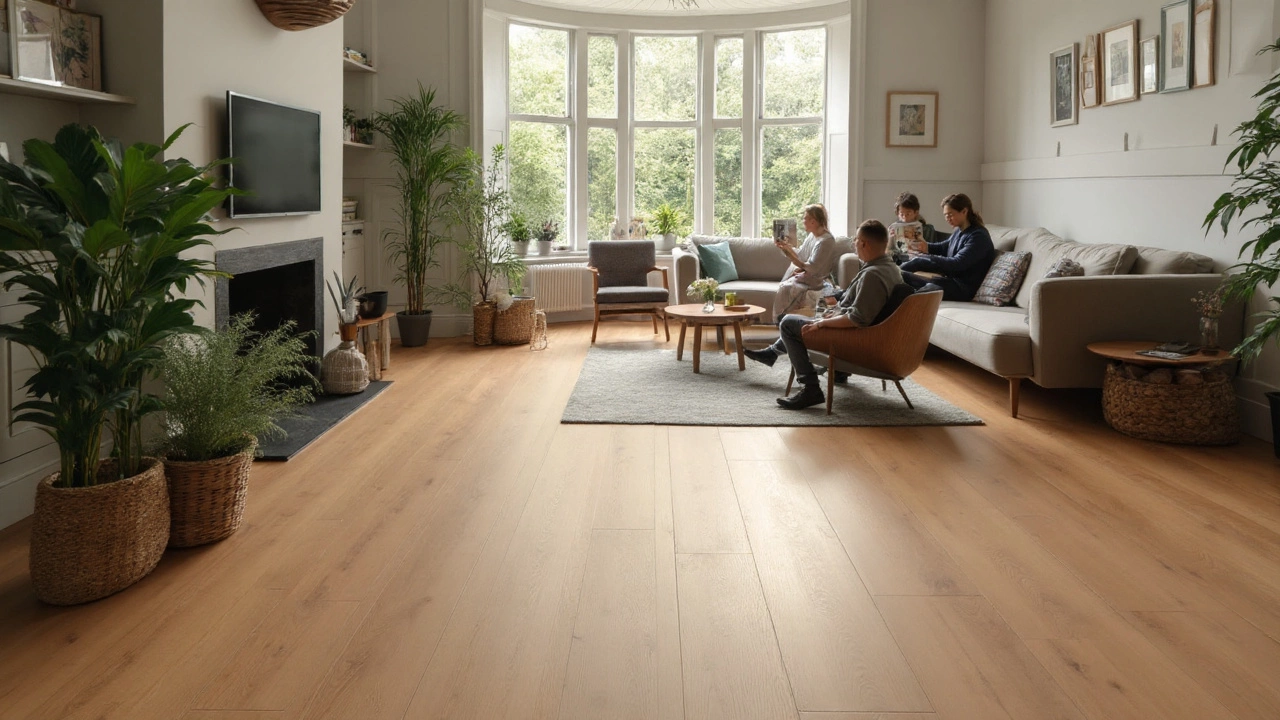Selling your house and worried you might’ve made a big mistake with that new floor? You’re definitely not the only one. Stories run wild in real estate corners—someone splurged on luxury vinyl plank (LVP) and now the neighbors say the house will sell for less. Others claim buyers line up and bid higher for those sleek new floors. Where’s the truth hiding in all this chaos? It’s not as simple as “cheap means cheap” or “vinyl is always tacky.” Vinyl flooring has gone through a total transformation, especially in the last ten years. If you’re still picturing that glue-down kitchen sheet from your childhood, you’re not seeing what’s on the market in 2025.
What Is Luxury Vinyl Plank, and Why’s It So Popular?
Luxury vinyl plank—yeah, LVP—isn’t your grandma’s old linoleum. LVP flooring is made up of several sturdy layers, usually including a waterproof core, a digitally printed photographic layer that mimics wood or even stone, and a thick, scratch-resistant wear surface. Why did it take over the flooring world in both starter homes and million-dollar condos? For starters, it handles spills, heavy foot traffic, and pet claws like a champ. Some versions even snap together with zero glue, thanks to click-lock designs that make installation nearly foolproof.
But the obsession isn’t just about durability. The biggest shift is the look. High-definition printing and modern embossing techniques make *good* LVP nearly indistinguishable from real hardwood, especially in photographs (and open houses, where buyers may only walk the floor once). Plus, LVP feels warmer and slightly softer underfoot—good news for those who hate morning chills or creaky joints. It comes in endless styles and price points: from rustic, wide-plank “oak” that looks straight out of a mill, to slate or herringbone tiles for modern tastes.
Let’s clear up something: high-quality LVP isn’t always a “bargain” floor. Premium brands can push close to $6 or even $8 per square foot, not counting installation. Just for context, here’s a quick price and feature breakdown against the classic competitors:
| Floor Type | Avg Cost (per sq ft) | Waterproof | Installation | Durability Rating |
|---|---|---|---|---|
| Luxury Vinyl Plank | $2 - $8 | Yes | DIY or pro | High |
| Solid Hardwood | $5 - $15 | No | Pro | Medium |
| Engineered Wood | $4 - $10 | Somewhat | DIY or pro | Medium-High |
| Laminates | $2 - $6 | Somewhat | DIY | Medium |
| Tile | $5 - $20 | Yes | Pro | High |
If you’re trying to decide, it probably comes down to taste, daily life, and budget—and that links into what buyers in your area want. But to understand the LVP “love it or hate it” debate, it’s not enough to just list prices. You have to dig into how it plays into the mind of today’s buyers and appraisers.
Does Luxury Vinyl Plank Flooring Hurt or Help Home Resale Value?
Let’s get blunt: most buyers today do NOT see LVP as “cheap” or “builder grade” unless it’s the absolute bottom-rung product, badly installed, or an obvious mismatch for a home’s style. In starter homes or mid-range houses, high-end LVP is often a perk, not a penalty. A 2024 housing study by HomeLight found that 72% of realtors say well-installed LVP (with realistic wood or stone looks) actually increases buyer interest, especially in kitchens, bathrooms, and basements. That number jumps higher in climates with lots of rain or snow, where water resistance is a huge selling point.
Is that all? Not quite. Appraisers (the folks who help banks figure out what your home is “worth”) don’t use gut feelings or trendy posts—they compare your home to similar houses that recently sold nearby (“comps”). If most local comps have old carpet or budget vinyl, new LVP can push your value up. But if you rip out decades-old hardwood in a historic city rowhouse and replace it with basic plank, you’re probably knocking a few thousand off your home’s market position. So “does LVP hurt home value?” has a real “it depends” answer—but it swings positive more often than negative if you choose wisely.
An important tip: local trends can flip the story. In 2024 and now 2025, suburban and rural buyers often see LVP as an upgrade. In luxury markets—city brownstones, high-end historic homes—wood or designer tile is still king. But a lot of “downgrade” debates are old news. Even high-end new builds now feature LVP in basements, laundry rooms, and sometimes throughout the main floor (especially when pets or young kids are part of the picture).
Here are a few ways LVP can actually *increase* your resale value:
- Offers serious water resistance for kitchens, laundry rooms, and basements.
- Modern designs look like real hardwood—faking out many buyers (and some agents) in quick walkthroughs.
- Lower maintenance costs and fewer “move-in projects” for buyers.
- Holds up better to pets, active families, or heavy furniture than most engineered wood or laminates.
- Can modernize an outdated (especially carpet-heavy) house quickly, attracting more buyers in online photos.
But not all floors are created equal. Low-quality, wavy, or fake-looking plank screams “budget fix” and will tank your curb appeal just as fast as ripped linoleum or a broken tile. You don’t want that.

How Do Buyers and Real Estate Agents Really See LVP in 2025?
Real estate agents in 2025 are all about first impressions and buyer’s checklists. Ask ten agents what buyers want and you’ll get ten lists, but here are some facts that come up a lot:
- Nearly 78% of realtors polled by the National Association of Realtors in 2025 expect buyers, especially millennials and Gen Z, to look for move-in ready floors—no sanding, no staining, no wild repairs needed. LVP nails this.
- Open house feedback almost always ranks “updated flooring” above “genuine hardwood” if the latter is scratched, uneven, or an unfinished relic of the ‘90s.
- In areas with lots of pets or young kids, waterproof flooring is THE hot sell.
- The exception: communities with historic districts or homes built before 1940, especially where buyers expect original details, will still ding you for swapping out hardwood—in these cases, LVP is seen as a downgrade.
Here’s a funny thing: buyers often struggle to tell engineered hardwood from LVP, and plenty say “wow, love this floor!” not even realizing it’s not “real” wood. I’ve watched buyers run their hands along a plank, then debate with their agent if it’s wood or vinyl. Studies as recent as 2024 found that 63% of buyers can’t spot the difference unless someone tells them. That says a lot about how much this stuff has improved.
Still, agents warn against “everything all at once” flooring jobs. If your living room is LVP, kitchen is cheap tile, and bedrooms are worn-out carpet, buyers notice. Consistency = value. If you commit to LVP, it helps to install it in most or all common areas, especially where traffic is highest.
The Pros and Cons of Luxury Vinyl Plank—Broken Down
Before ripping out your current floors or eyeing new planks at the store, check out this rundown of what actually matters to home value:
- Luxury vinyl plank is *way* easier to maintain than hardwood—no sanding, refinishing, or waxing needed. Most just need a sweep and a mop.
- Top-grade planks can last 15–25 years, sometimes up to 30, but super-cheap stuff peels, dents, or loses its color after five years.
- Because LVP is waterproof, it’s a no-brainer in basements or homes where indoor floods happen. That’s impossible with any regular hardwood.
- But...it can’t ever be sanded or repaired if it gets gouged. Damaged planks mean a full replacement—though swapping out individual boards is possible with some brands.
- Early LVP sometimes released VOCs (bad chemicals), but most modern lines are low-VOC and eco-friendly, with certifications like FloorScore or Greenguard.
- If you’re after "real" wood texture, you can get shockingly close, but absolutely nothing feels exactly like warm, hand-finished oak. Anyone serious about authenticity will always notice.
- Installed right, LVP makes older homes look fresher for photos and in-person tours. Installed wrong—with gaps, poor cuts, or cheap underlayment—it’s a dead giveaway, and you’ll pay for that in the final offer.
- LVP can work over many types of subfloors (sometimes even over tile!), making renovations much faster and far less disruptive.
A huge mistake? Going for the cheapest-possible LVP to “save now” and hoping it runs up your asking price. Seasoned appraisers sniff out generic, flat-looking planks fast, and buyers notice when floors look plastic. Aim for 20mil wear layers, trusted manufacturers, and realistic grain finishes—don't just trust glossy packaging.

Tips to Boost Value When Choosing Luxury Vinyl Plank
Is LVP going in your laundry room, or are you thinking about covering the whole house? Your approach matters. Here’s how to choose LVP so you’re giving your home a boost, not a black mark:
- Go for realistic looks: Wide planks, pronounced grain textures, and “random” patterns (not every piece identical) fool the eye best. Stone and ceramic prints are getting better too, but wood styles remain the most popular.
- Choose a finish that matches your home’s style and market. Dark brown and cool grays feel modern and cozy, while classic oaks and neutral light browns stay timeless for resale value.
- Double-check thickness: A thicker plank (at least 5mm or more) feels solid, hides small floor bumps, and lasts longer. Thicker equals quieter, too—less “clacky” echo.
- Don’t skimp on underlayment or subfloor prep. Uneven floors ruin even the priciest LVP job fast.
- Stick with major brands—Mohawk, Shaw, Karndean, and COREtec top every recent satisfaction poll. Ask for certifications showing the product is low-VOC and tested for indoor air quality.
- If your home is older or in a historic area, think hard before ripping out original wood. You can often refinish hardwood for less than installing top LVP, and some buyers will walk if you ditch historic details.
- Consistent flooring in common areas feels more upscale. Don’t mix lots of different styles and colors, unless you’re absolutely sure it works visually.
- Finish edges and transitions cleanly. Sloppy or cheap trim is a red flag for buyers and appraisers alike.
Remodeling for an open house? Swap carpet or old tiles for LVP, especially in kitchens, halls, and high-traffic living rooms. Avoid anything too trendy or wild—bold color floors age quickly, and buyers five years from now might groan instead of gasp.
For anyone not moving soon, the day-to-day payoff might matter more than resale. Kids and dogs, winter boots, party spills—LVP wins big on peace of mind. But that doesn’t mean you have to sacrifice future value if you pick top brands and install them right.
So while luxury vinyl plank may have begun life as a budget fix, it’s now a real contender for adding value to regular family homes. Worry less about what’s trending on Instagram, and listen to what buyers, agents, and appraisers see in your local market. Sometimes the "upgrade" has more to do with smart choices and a tidy install than which material you check at the store.


